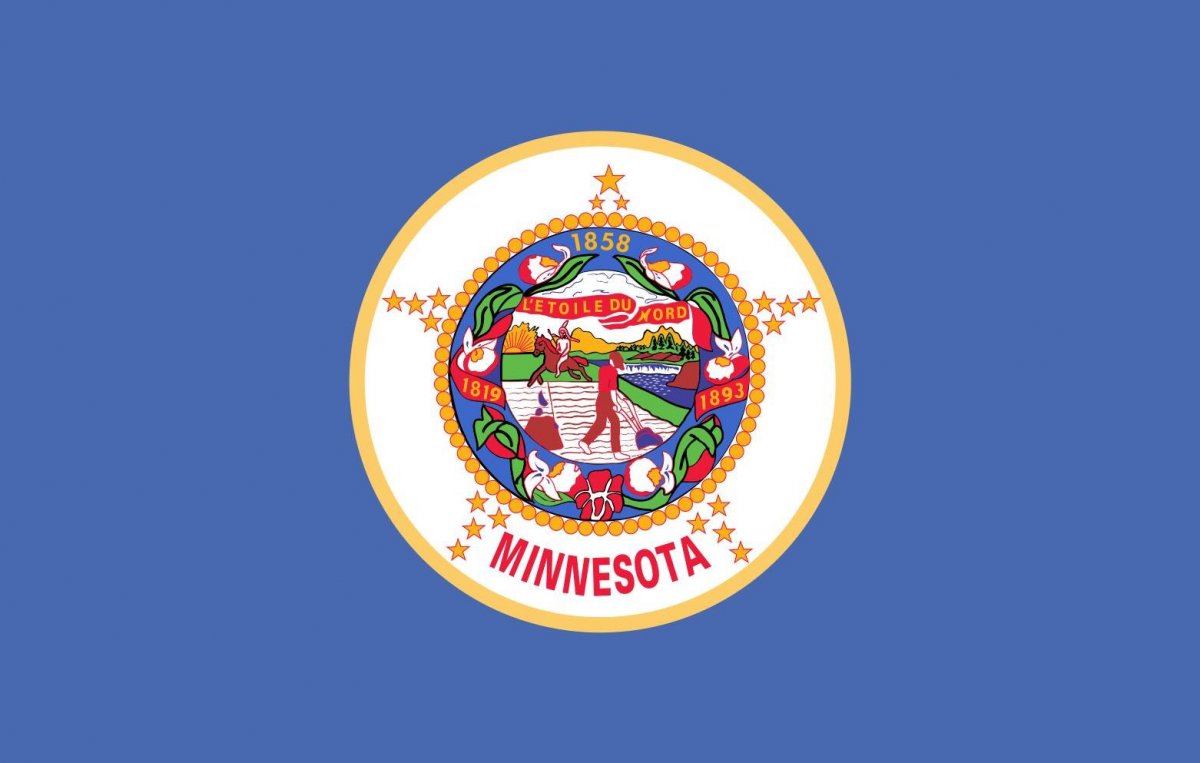Minnesota ( (listen)) is a state in the upper Midwestern United States. It is the 12th largest U.S. state in area and the 22nd most populous, with over 5.75 million residents. Minnesota's geography consists of western prairies, now given over to intensive agriculture; deciduous forests in the southeast, now partially cleared, farmed, and settled; and the less populated North Woods, used for mining, forestry, and recreation. Roughly a third of the state is covered in forests, and it is known as the "Land of 10,000 Lakes" for having over 14,000 bodies of fresh water of at least ten acres. A little more than half of Minnesotans live in the Minneapolis–Saint Paul metropolitan area, known as the "Twin Cities", the state's main political, economic, and cultural hub. The Twin Cities is the 16th largest metropolitan area in the U.S. Other minor metropolitan and micropolitan statistical areas include Duluth, Mankato, Moorhead, Rochester, and St. Cloud.Minnesota, which gets its name from the Dakota language, has been inhabited by various indigenous peoples since the Woodland period of the 11th century BCE. Between roughly 200 and 500 CE, two areas of the indigenous Hopewell tradition emerged: the Laurel Complex in the north, and Trempealeau Hopewell in the Mississippi River Valley in the south. The Upper Mississippian culture, consisting of the Oneota people and other Siouan speakers, emerged around 1000 CE and lasted through the arrival of Europeans in the 17th century. French explorers and missionaries were the earliest Europeans to enter the region, encountering the Dakota, Ojibwe, and various Anishinaabe tribes. Much of what is now Minnesota formed part of the vast French holding of Louisiana, which the United States purchased in 1803. After several territorial reorganizations, the Minnesota Territory was admitted to the Union as the 32nd state in 1858. Minnesota's official motto, L'Étoile du Nord, is the only state motto in French; meaning "The Star of the North", it was adopted shortly after statehood and reflects both the state's early French settlers and its position as the northernmost state in the contiguous U.S.
As part of the American frontier, Minnesota attracted settlers and homesteaders from across the country, with its growth initially centered on timber, agriculture, and railroad construction. Into the early 20th century, European immigrants arrived in significant numbers, particularly from Scandinavia, Germany, and Central Europe; many were linked to the failed revolutions of 1848, which partly influenced the state's development as a major center of labor and social activism. Minnesota's rapid industrialization and urbanization precipitated major social, economic, and political changes in the late 19th and early 20th centuries; the state was at the forefront of labor rights, women's suffrage, and political reform. Minnesotan politics, culture, and identity continue to reflect this history and remain highly progressive by national standards.Since the late 20th century, Minnesota's economy has diversified significantly, shifting from traditional industries such as agriculture and resource extraction to services, finance, and health care; it is consequently one of the richest in terms of GDP and per capita income. The state is home to 11 federally recognized Native American reservations (seven Ojibwe, four Dakota), and remains a center of Scandinavian and German cultures with an influence of Lutheranism. In recent decades, Minnesota has become increasingly multicultural, driven by both greater domestic migration and immigration from Latin America, Asia, the Horn of Africa, and the Middle East; it has the nation's largest population of Somali Americans and second largest Hmong population. Minnesota's standard of living and level of education are among the highest in the U.S., and it is ranked among the best states in metrics such as employment, median income, safety, and governance.

1858May, 11
Minnesota is admitted as the 32nd U.S. State.
Choose Another Date
Events on 1858
- 25Jan
Felix Mendelssohn
The Wedding March by Felix Mendelssohn is played at the marriage of Queen Victoria's daughter, Victoria, and Friedrich of Prussia, and becomes a popular wedding processional. - 11Feb
Lourdes apparitions
Bernadette Soubirous's first vision of the Blessed Virgin Mary in Lourdes, France. - 5Aug
Transatlantic telegraph cable
Cyrus West Field and others complete the first transatlantic telegraph cable after several unsuccessful attempts. It will operate for less than a month. - 16Aug
Transatlantic telegraph cable
U.S. President James Buchanan inaugurates the new transatlantic telegraph cable by exchanging greetings with Queen Victoria of the United Kingdom. However, a weak signal forces a shutdown of the service in a few weeks. - 20Aug
Evolution
Charles Darwin first publishes his theory of evolution through natural selection in The Journal of the Proceedings of the Linnean Society of London, alongside Alfred Russel Wallace's same theory.

 English
English  español
español  français
français  português
português  русский
русский  العربية
العربية  简体中文
简体中文